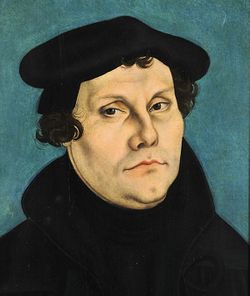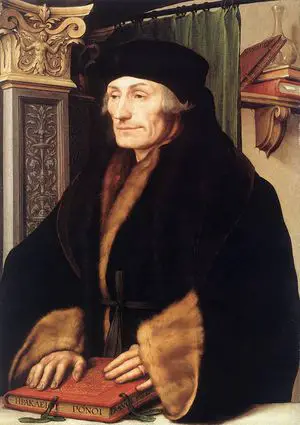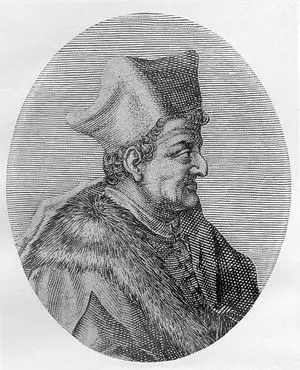how did humanists studies and ideas affect renaissance life

Did the Renaissance lead the Christianity Reclamation? Without the Renaissance, it is difficult to imagine that the Christianity Reformation could have succeeded in Europe. The Renaissance placed mankind at the center of life and had shown that this world was not just a 'vale of tears' merely could be pregnant, and it was contingent for people to live without reference to the divine.[1] The Renaissance surgery 'Renaissance' was influenced by the ideas of the ancient onetime and information technology drew from Roman and Greek culture to provide a solution to current problems.
The Renaissance was a Pan-European phenomenon and denaturized the elites' mental worldview in Europe and the emerging bourgeoisie across the continent. The ethnic movement was to have a profound impression on people's worldview. The Renaissance produced the Humanists, WHO were educationalists and scholars; they sought Sojourner Truth and knowledge by re-examining classical texts and the bible. The Humanists' ideas, the development in textual psychoanalysis, and the Northern Rebirth metamorphic the intellectual landscape painting. They encouraged many another Church building reformers, so much every bit Martin Luther, and they later broke with Rome and black-and-white European Economic Community into two confessional camps, Protestantism and Catholicism.
What was the Reformation

Sir Sir Thomas More, Great English Humanists
The Reformation is the schism that divided the Roman Catholic Church and ended the old unity of Christendom. The origins of the Reformation were in an attempt to reform the Church, on that point had been numerous attempts in the preceding to reform the Church building, but they had complete unsuccessful. By the early sixteenth 100, thither was a growing crescendo of calls for the Church's reform and an end to the clergy's evil and corruption.[2]
The Reformation was not an undertake to divide the Roman Church, but information technology was an sweat to reform it. The Broad-minded Church's failure to reform and its attempts to oppress the Reformers meant that it swarm many another to establish their own churches. The Reformation was an seek to return to the originative teachings and values of the embryonic OR 'Apostolic' Church service.[3]
The Reformers claimed that only the Bible could Blackbeard and instruct men all but the Word of Graven image and had little regard for the received wisdom and authority. Au fond, the entirely text that mattered was the Bible, and anything that was not in the Bible should be rejected. The Reformation ordered more emphasis on the individual, and in words, people could not be saved by good kit and boodle operating theater sacrament but by 'faith solely.'[4]
Ultimately, this interpretation meant that the reformers rejected much of the Christian church's traditional teachings and resulted in at first a system of rules gainsay between the reformers and the Church, particularly in Germany. This gainsay led to a full-blown schism in the Catholic Church and the formation of separate Protestant Church Churches. The causes of the Reformation were manifold, simply the Renaissance and the Humanist movement were crucial and indeed decisive.[5]
The Renaissance and Religion
The Renaissance is often seen as a secular and even pagan movement that was opposing-Christian in galore ways. This view was certainly true in Italy, the birthplace of the Renaissance. The humanists were particularly worldly and had bitty sake in the Church.[6] Several early Italian humanists, such as Petrarch, sought to reform the Church, merely his successors were largely secular in outlook and concerns. Many a humanists were interested in reforming the Church, but in the main, the Church and religion was non a major preoccupation of the Italian humanists. However, there were galore Renaissances, and the movement took different forms in other countries.[7].
The ideas of the Italian Renascenc institute their way to the North of Europe at once when at that place was a centripetal audience for them. The Renaissance ideas and the works of classical writers were transmitted throughout northern Europe by the new printing press and led to the Northern Renaissance. The Northern Renaissance is the term bestowed to the cultural flowering north of the Alps, German-speaking countries, French Republic, England, and elsewhere.
Although influenced by the Italian Renaissance, the Northern Renaissance was a unique event and was different in some crucial regards.[8] It was also interesting in the old past. It believed that it offered an alternative view of what spirit could be and could even provide practical direction on how the great unwashe should live and organize their societies. However, Northern Europe was more more religious in its concerns that the Italian Renaissance. [9]
The North Humanists made the reclaim of the Church their chief engrossment. Many German, English, and other Northern Humanists proverb no contradictions between Christianity and the study of ancient cultures and believed that they could be reconciled.[10] The religious character of the Renaissance north of the Alp was due in part to the continuing influence of the Church, unlike in Italy, where its, was in decline.
Disdain the oftentimes sad state of the Church, the general population and even the elite group remained very religious. The demand for the reform of the Church was prevalent and was a particular preoccupation of the elite. The desire for Christian church reform can personify seen in the kit and boodle of major Northern Renaissance figures such as Norman Mattoon Thomas More Oregon Rabelais, who satirized the abuses in the monasteries, in finicky.[11]
The Northern Humanists divine many people to become more strident in their demands for reforms and the end of abuses such Eastern Samoa simony and clerical immorality. The works of Erasmus were specially crucial in that regard. In his much admired and wide read book 'In Praise of Folly,' he lampooned and ridiculed corrupt clerics and immoral monks.[12]
The Northern humanists' attacks on the Christian church did much to encourage others to envision it in the original light. They became less deferential to the clergy, which led many of them to support the Reformers when they unsuccessful to conclusion the Church's degeneracy.[13] Previously, some populate believed that the Church was non capable of reforming itself and received it. The humanists believed in reasons and the possibility of progress all told aspects of human being life. They argued that what was happening at present was not fated to be and could be developed and changed, contrary to the medieval view of an unchanging and fixed order. This feeling in the possibility of change inspired many people to seek real and meaningful changes in the church, and when they failed to promised these, they sought to create alternative churches.[14]

Humanism and the Church building

Lorenzo Valla - Italian Humanist
The humanists were intellectuals who were by and large concerned in scholarly pursuits. They sought to understand the ancient world, get answers and noesis, and study ancient texts to achieve this. They precious to move endorse to the original texts to understand the past and sought-after to remove medieval corruptions and additions to texts. Their rallying cry was 'Ad Fontas' in Latin, which is in English 'to the sources.'[15] They studied the antediluvian texts and developed textual strategies to understand the classical past's great works.
The Humanists were better competent to understand the works of the past after developing ways to canvass texts. The development of textual criticism was not only of academic worry but was to change how people came to watch the Church building and were ultimate to counteract the authority of the Pope. The Church's power lively happening the authority of the Pope and the prelates, which was ultimately based on custom.[16]
The humanists employed their textual analytic thinking and techniques to the bible and other works, and they made some astonishing discoveries. They provided certify that undermined the claims of the Catholic Church. Ironically, a school of thought employed by the Pope was one of the kickoff to discredit the tralatitious authority of the Papacy in the Renaissance. The Bishop of Rome was not just a spiritual leader, but He claimed to experience literal political king. The Pontiffs were Edgar Lee Masters of the Papal States in central Italy, and more even believed that Europe's monarchs were subject to their judgment. This was based on the Donation of Constantine, a document from the first Christian Emperor, which acknowledged to show that he had bequeathed his authority to the Popes.[17]
This document was used to justify the Bishop of Rome's temporal power. An Italian humanist called Lorenzo Valla began to study this document historically. He found that it was written in a Italic language style from the 8th century and agelong after Constantine I's death. Valla showed that the document was a forgery. This information and other revelations helped to damp the Pope's authority and emboldened reformers to challenge the Church. Erasmus did much to disgrace the Church's traditional theology when he discovered that the words in the Christianity Holy Scripture about the Trine (that God has three persons) were not in the earliest versions.[18]
Gerhard Gerhards argued that the Catholic Church had added the words to support about statements agreed at a Church Council in the Roman era. Once over again, aside regressive to the sources, medieval corruption was discovered, and old assumptions proved to be false, which weakened the Catholic Church's berth.[19]
Papal Infallibility
The Humanists were non revolutionaries. They were often social conservatives and unremarkably devout Catholics. This can be seen in the great Erasmus and his booster, the English statesman and writer Thomas More. However, in their interrogation and examination of texts and their desire to purge them of any medieval corruptions or additions, they changed how multitude viewed the Church service. The run of Erasmus and other scholars did much to subver the Pontificate.[20] Their examination of key texts revealed that much of the authority of the Christian church was well-stacked on flimsy foundations. This led many to challenge the power of the Pope. Arsenic the Church leader, He was infallible, and his words on profane and religious issues were to be obeyed without question.
After the humanists' revelations, many a of the faithful began to wonder if the Pope. 'equally the heir of St Peter' was infallible and should he be rendered unquestioned obeisance.[21] The reformers under the influence of the Humanists began to examine the Good Book, which they saw equally the unchallenged Word of God, to find answers. They became less inclined to take the words of the Pope as practice of law and argued that only the Book was the source of authority. Like the Humanists, they distinct to go back to the 'sources,' in this shell, the Bible. They eventually came to see the Bible as the only root of authority. They increasingly began to take i the Pope and the Christianity Church service as having distorted the Gospels' message.[22] This belief soon gained widespread currentness among many Reformers and those sympathetic to them in Germany and elsewhere.
Close
The Renascence was a cultural flourishing that promoted profane values over religious values. However, in Northern Europe, the ideas of the Rebirth were to take on a religious character. The ideas of the Italian humanists, such Eastern Samoa matter analysis, the use of evaluative thinking, and rejecting authority that was not sourced on reliable bear witness were taken up by Northern Humanists World Health Organization applied them to the Church.[23]
The Northern Humanists sought to reform the Christian church and were generally pious manpower. However, the humanists perhaps unintentionally weakened the Papacy and its theoretical underpinnings. In their interrogatory of key texts and especially the Bible, they exposed many key assumptions as pretended. This was to lead to a distributed take exception to the idea of Papal Infallibility and the Church's hierarchy.[24] The Renaissance also encouraged people to interrogate standard wisdom and offered the possibility of change, which was unthinkable in the middle ages. This encouraged the reformers to tackle abuses in the Church, which ultimately led to the split and the end of Christianity's old idea.
References
- ↑ Giustiniani, Vito. "Ho, mo, Humanus, and the Meanings of Humanitarianism," Journal of the History of Ideas 46 (vol. 2, April – June 1985), p 178
- ↑ Payton Jr. James R. Getting the Reformation Wrong: Correcting Just about Misunderstandings (IVP Academic, 2010), p. 78
- ↑ Payton, p. 113
- ↑ Payton, p. 118
- ↑ St. Patrick, James. Renascenc and Reformation (New York State: John Marshall Cavendish, 2007), p. 113
- ↑ St. Patrick, p 115
- ↑ Payton, p. 45
- ↑ St. Patrick, p. 123
- ↑ Chipps Smith, Jeffrey. The Northern Renaissance. (Phaidon Press, 2004), p. 167
- ↑ Chipps, p 119
- ↑ St. Patrick, p. 145
- ↑ O'Neill, J, ed. The Renaissance in the North. New York: The Metropolitan Museum of Art, 1987), p. 5
- ↑ Collinson, Patrick. The Reclamation: A History (Longman, Jack London, 2006), p.87
- ↑ Collinson, p. 56
- ↑ Payton, p. 57
- ↑ Patrick, p. 121
- ↑ Davies, Tony. Humanism (The New Critical Idiom). (University of Stirling, Britain. Routledge, 1997), p 34
- ↑ Davies, p 67
- ↑ Davies, p. 134
- ↑ Payton. P. 34
- ↑ Patrick, p 117
- ↑ Collinson, p. 115
- ↑ Chipps, p. 67
- ↑ Chipps, p. 17
Updated, January 28, 2019.
Admin, Ewhelan and EricLambrecht
how did humanists studies and ideas affect renaissance life
Source: https://www.dailyhistory.org/How_did_the_Renaissance_influence_the_Reformation
Posting Komentar untuk "how did humanists studies and ideas affect renaissance life"